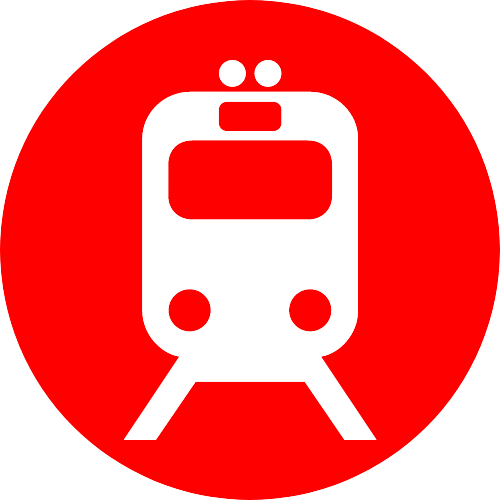Anyone who has taken Tokyo’s subway during rush hour knows that it gets insanely crowded. Trains packed shoulder to shoulder with commuters are a daily occurrence. But what’s truly fascinating is the train pushers—staff members whose entire job is to physically shove passengers into the cars to maximize capacity.
For first-time visitors, watching transit employees forcefully cram people into overflowing train cars seems downright bizarre. Yet it’s a normal part of life for Tokyo commuters. In this article, we’ll explore the world of Tokyo’s train pushers. Read on to learn who they are, how they operate, and why they are essential to keeping Tokyo moving.
Who are Tokyo’s Infamous Train Pushers?
Known in Japanese as “oshiya,” Tokyo’s so-called train pushers are transit employees whose job is to help passengers board crowded train cars, particularly during rush hour. Clad in hats and gloves, they vigorously push and pack riders into trains until the doors can close.
Oshiya are hired by individual railway companies like JR and stationed at the busiest stations during peak morning and evening commute times. They usually work in teams of 2-3 people at major transfer hubs where passenger traffic backs up quickly.
Their primary goal is facilitating quick and efficient train boarding to keep the transit system running smoothly. The oshiya have become minor celebrities with commuters and tourists alike snapping photos of them hard at work cramming the crowds.
How Do Train Pushers Operate?
Watching oshiya in action during Tokyo’s notoriously crowded commutes reveals their systematic approach to stuffing passengers aboard:
Strategic Positioning – Oshiya stand at the center of the platform to quickly reach both sides of the train doorways.
Flow Control – As passengers stream off, oshiya block new riders from boarding right away to prevent collisions.
Packing – Oshiya start arranging and angling commuters to maximize space inside crowded cars.
Pushing – Using their hands, hips, and knees, oshiya vigorously push waiting commuters into the car from both sides to fit more people.
Door Monitoring – Oshiya check that no bags or limbs are caught in the doors as they repeatedly attempt to close them.
Signaling – With subway cars crammed to the brim, oshiya signal the conductor that the train is ready to depart.
Rinse and Repeat – During rush hour, oshiya repeat this routine every 2-3 minutes as trains come and go.
It’s an impressively synchronized dance that oshiya carry out with military precision each day to keep Japan’s busiest subway system moving.
Why Train Pushers are Essential in Tokyo
With so many videos online showing Tokyo’s intensely crowded trains, it’s natural to wonder why they need to be packed even tighter. Here are the main reasons why train pushers play such a vital role:
- Tokyo’s massive population – As the world’s largest metro area, Tokyo has over 40 million residents to transport daily.
- Rush hour congestion – Millions of commuters all need to use the trains simultaneously in a condensed morning and evening rush period.
- Limited capacity – Tokyo’s complex train network has chronic congestion and capacity constraints, especially on older lines.
- Efficiency – Train pushers maximize passenger load and speed up boarding times to maintain strict schedules.
- Safety – Pushers minimize waiting passengers on platforms often overcrowded to the point of danger.
- Cultural conformity – Japanese commuters readily accept uncomfortable crowding more than many cultures.
While the crush load conditions seem intolerable to most, oshiya help Tokyo’s transit system achieve impressive efficiency and safety transporting millions.
Interesting Facts About Tokyo’s Crowded Subway
Beyond its notorious train pushers, Tokyo’s jam-packed rail system has some other fascinating facts:
- Tokyo trains transport over 40 million passengers daily, the most worldwide.
- During rush hour, some subway lines carry over 157,000 passengers per hour at maximum capacity.
- Trains achieve top recorded speeds of 60 kph (37 mph) even with extreme crowding.
- Japan Railways hires women as oshiya during rush hour for their perceived politeness with female passengers.
- Special underground tunnels and platforms at Shinjuku Station have been built to handle transferring passenger crowds.
- Women-only cars were introduced in 2000 to ease crowding for female commuters bothered by groping.
- Passenger flow lines on platforms help guide chaotic boarding and exiting at busy stations.
Coping With Tokyo’s Crowded Train Commute
For visitors braving Tokyo’s congested transit system, keep these tips in mind:
- Avoid rush hours if possible. Travel mid-morning or mid-afternoon instead.
- Let passengers exit trains before boarding. Don’t obstruct people trying to alight.
- Move down the platform to find less crowded train cars.
- Consider splurging on taxis to avoid crammed trains during peak times.
- Follow the flow and cues from oshiya and other passengers.
- Stay calm, patient and polite. Don’t push or shove others.
Tokyo’s Crowded Commute: An Impressive Feat
Tokyo’s packed trains and crowds being shoved onboard by uniformed oshiya certainly seem chaotic. But the orchestrated routine enables one of the world’s largest, busiest transportation networks to run with stunning efficiency while transporting millions. Witnessing Tokyo’s rush hour crowds and train pushers in action gives a small glimpse into the daily organized madness that is life in the mega-city. It’s a sight that amazes both locals and visitors alike.

Jonny is an Englishman who has been travelling around South-East and East Asia since 2015. He loves Japan but isn’t a weeb. He’s able to live the digital nomad lifestyle by blogging full-time.
